Peru’s cocaine trade overruns remote Indigenous territory
As coca production surges, Indigenous communities in Peru fear addiction and violence are encroaching on their lands.
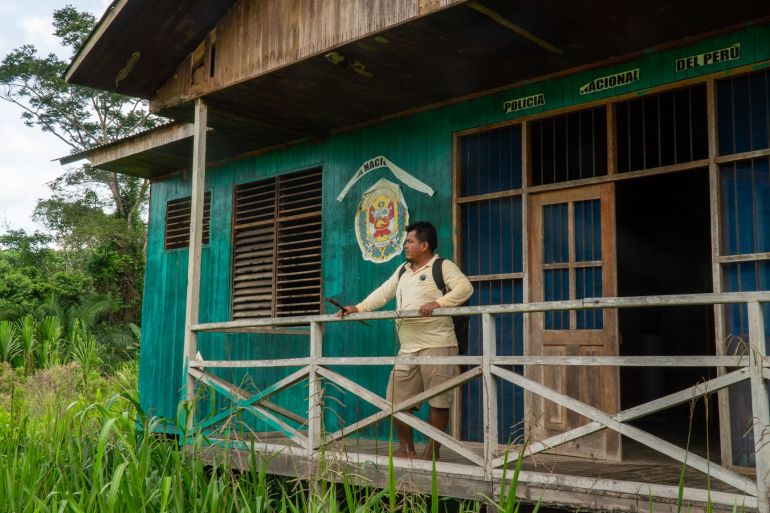
Breu, Peru – Guiding his canoe along a jungle-shrouded river, Fernando Aroni steers towards the water’s edge, cuts the outboard motor and climbs a muddy embankment to a police outpost nearly swallowed by forest.
Inside, dead bats litter the broken floorboards, and a sign on the wall bearing Peru’s national emblem, emblazoned with the words “God, Country and Law” blisters and peels. The outpost stands at the 38th boundary line, a remote stretch of Amazon rainforest demarcating Peru’s border with Brazil.
Keep reading
list of 3 itemsRights group denounces ‘brutal’ protest crackdown in Peru
Peru sends forces to Chile border where hundreds stranded
“This police checkpoint has been abandoned for over 10 years. Smugglers are taking advantage,” said Aroni, the 41-year-old leader of Santa Rosa, an Indigenous Amahuaca village whose territory edges up to this wild border. “We’ve been forgotten by the Peruvian authorities.”
Along the untamed edge of Peru’s Ucayali department, the cultivation of coca — the raw ingredient in cocaine — is surging. A metastasised drug trade, once concentrated within the folds of the Andes, has descended into this lowland jungle region, threatening the reserves of some of the world’s most isolated tribespeople.
Narcotics experts and Indigenous communities blame an anemic state security apparatus, whose absence along its borders has created “an open door” for the accelerating drug trade.
The Amahuaca are no strangers to state abandonment. They have enjoyed few resources in their efforts to survive disease, poverty and territorial conflict, as missionaries and industries like rubber and logging pushed into their home territory.
Today, as the drug trade rips through this isolated frontier, the Amahuaca — along with thousands of other remote Indigenous people — are once again in the throes of invasion.
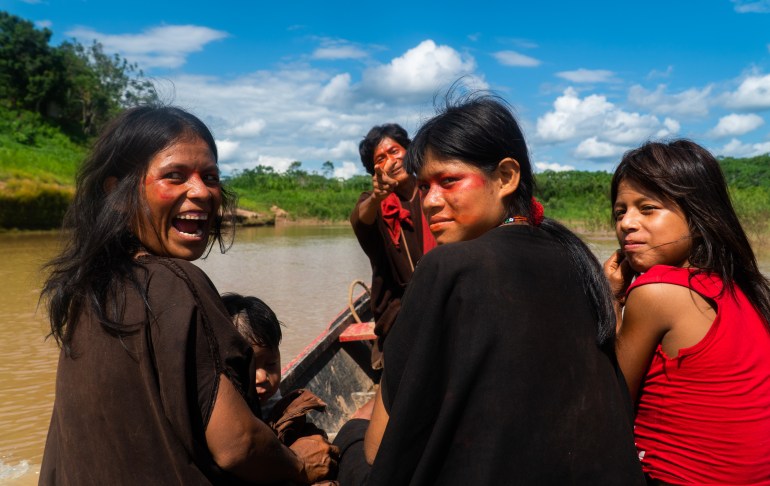
A spike in coca farming
Peru’s carefully crafted global image as a copper producer, culinary upstart and cradle of ancient Incan culture belies a darker reality: The Andean nation is also a prolific coca cultivator and cocaine producer, surpassed only by Colombia.
From 2021 to 2022, the land used to farm coca climbed by 18 percent, reaching record high levels, according to recent state data.
Cocaine production has steadily expanded from the valley of the Apurímac, Ene and Mantaro rivers, or VRAEM, to the remote forests of Ucayali, where land for coca crops has spiked by 466 percent in just five years, according to Peruvian anti-drug authorities.
“Ucayali has practically wide open borders and strategic positioning,” said Frank Casas, an expert on Peru’s drug trade. “Within the last three years, the region has become a high production area, and not only in terms of coca, but also in the production and commercialization of cocaine to international markets.”
Much of that production now occurs on Indigenous territory. Last year, nearly 14,000 hectares (34,595 acres) of coca — an area more than twice the size of Manhattan — was cultivated on land belonging to 295 native communities, according to Peru’s anti-drug commission DEVIDA.
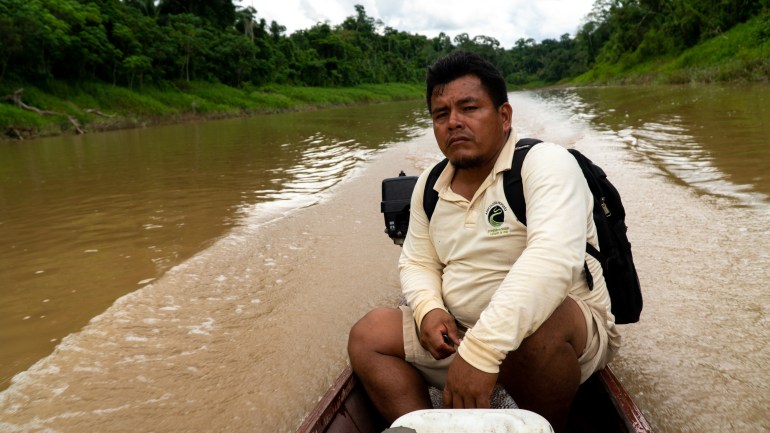
The town of Breu is among the areas affected. Cut off from the rest of Peru with no roads, only river transport, the ramshackle frontier town has become a transit point along the cocaine trade route.
Smugglers moving product from the Upper Ucayali River to Brazil and Bolivia pass through Breu, where small quantities of raw cocaine are sold to Indigenous children who often huddle behind the local market smoking it.
Among those struggling with addiction is Fernando Aroni’s 15-year-old son, who began smoking cocaine at the age of 11.
“Children as young as six are becoming addicts. As a leader, as a father, it’s my job to speak out,” said Aroni, who moved his children to Breu for access to schooling.
His appeals to regional authorities have been met with alleged death threats. Aroni said that strangers arrived at the local Indigenous federation office where he works, telling a colleague if he didn’t keep quiet, they would be back to kill him.
“In Peru, when you push back against these mafias, you put your life at risk. But I won’t stop. If someone has to die, that’s how it goes. But our children have to be protected,” Aroni said.
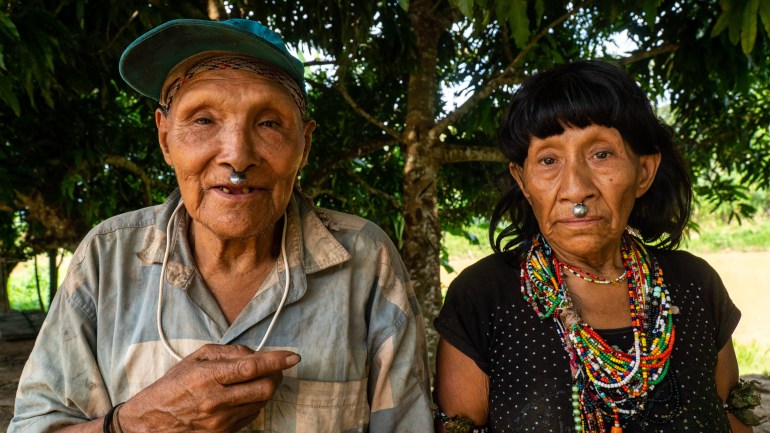
As the drug trade snakes a path through Ucayali, dozens of Indigenous villagers described the increased presence of colonos, or non-Indigenous settlers, scouting the territory to expand coca cultivation along the border.
The conversion of coca leaves into cocaine paste, a process that requires kerosene and other harsh chemicals, is also occurring on native land.
Unlike in the VRAEM and other coca-growing hotbeds, there have been minimal eradication efforts along this remote border region, allowing criminal networks to proliferate, experts told Al Jazeera.
“These Amazon borders are highly vulnerable and are now being violated. Broad exit points and a limited state is drawing in organized crime from Brazil,” Casas said.
At least two powerful Brazilian criminal organisations now operate within Peruvian territory, overseeing cocaine production and transportation, often via light aircraft.
Indigenous villagers in remote communities throughout the region often report regular sightings of small aircraft flying late in the evening and low to the ground to avoid radar detection. Since 2022, Ucayali’s regional forestry service has identified 63 hidden jungle runways thought to be in service of the drug trade.
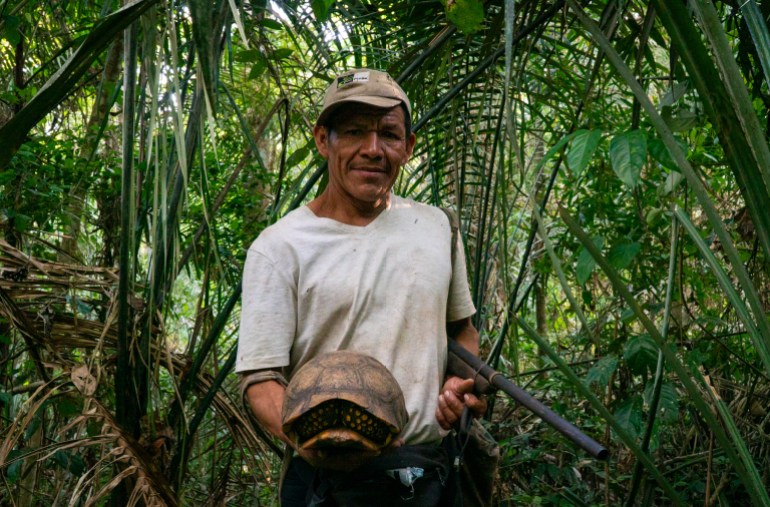
‘Constant’ presence of smugglers
In the secluded border village of Oori, a number of ethnic Asheninka families displaced by decades of armed conflict and drug-related violence have forged a quiet life of subsistence since the early 2000s. But in the past three years, their sense of security has been shattered.
Over a meal of roasted turtle and plantain porridge, Oori’s leader, Edwin Perez, described a “constant” presence of smugglers along his territory. He said they have not only attempted to recruit his village’s youth to transport drugs but have also asked to lease Oori’s land for coca parcels.
“We came here to secure a future for our children, not knowing anything about drugs,” Perez said. “Having lived through violence, I can tell you, we have to be prepared because evil always finds its way.”
Oori sits on the edge of the Murunahua Indigenous Reserve, a 4,662sq-km (1,800sq-mile) protected area that is home to semi-nomadic tribes living in isolation from Peruvian society. Along the reserve’s perimeter, coca crops and illegal airstrips are encroaching, and smugglers are now breaching the reserve to move drugs to Brazil.
“Drug traffickers have no qualms. They enter the reserve armed, and we know they have shot and violently attacked populations they encounter along the way,” said Beatriz Huertas, an anthropologist who studies Peru’s remote and isolated tribes. “We have evidence of massacres against isolated people within the Murunahua reserve.”
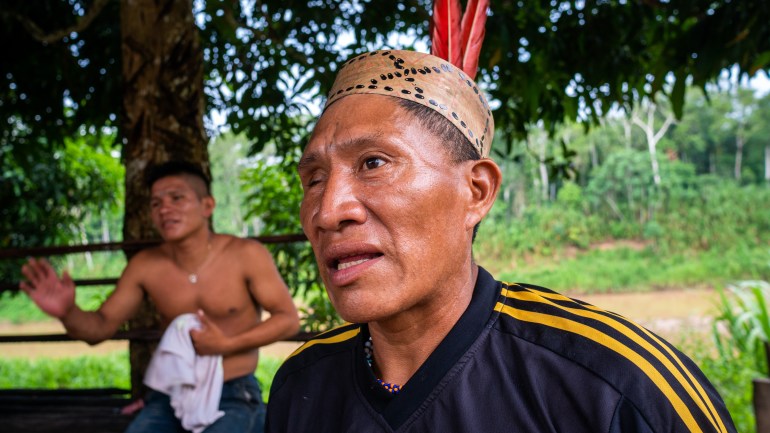
Huertas referenced the Chitonahua people, whose clashes with loggers inside the Murunahua reserve in the 1990s were followed by the spread of deadly respiratory diseases that wiped out nearly half of their population. While a group of Chitonahua still resides in isolation within the reserve, the majority today live as refugees along the banks of the Yurua River.
As drug traffickers continue to invade protected Indigenous areas, Huertas fears a similar fate for the estimated 7,000 tribespeople still living in isolation in Peru’s Amazon.
Despite mounting threats to the Murunahua reserve, Chitonahua leader Jorge Sandoval dreams of one day returning to his remote home territory. But he has been warned that, after decades of contact with the outside world, his own presence could trigger conflict and the spread of disease among his vulnerable relatives still in isolation.
“I was born in the reserve, along the headwaters of the Yurua River. We were all born there. My father and grandfathers are buried there. It’s our home. We want to return,” Sandoval said.